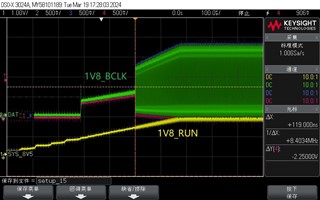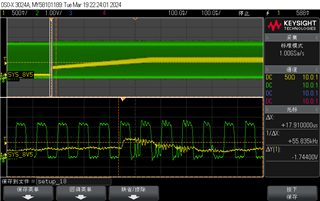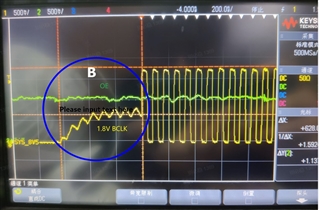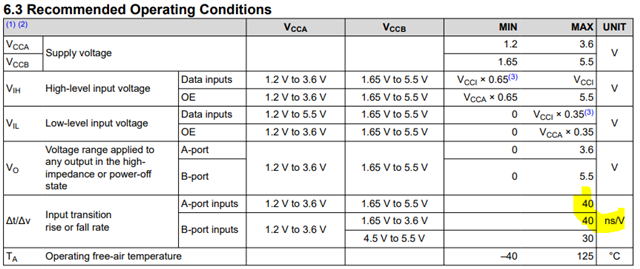Other Parts Discussed in Thread: TXB0104, TXU0304-Q1, TIDA-00296
Hi BU team
My customer reported txb0104-Q1 didn't always output any waveform after powered-up.
The schematic is shown in below screenshot. The DSP send 12.28MHz BCLK signal from I2S interface with 3.3V voltage to TXB0104 then output 1.8V voltage BCLK signal. The BCLK trace would directly drive two SOCs (1 to 2 channel).

There are two power-up sequencing.
1. After VCCB and VCCA are stably supplied to TXB0104, DSP send the BCLK signals to TXB0104 then TXB0104 always work normally.

2. VCCB(3.3V) is firstly supplied and BCLK from DSP also is feed into TXB0104 simultaneously,then VCCA is supplied to TXB0104 and there is about 700us soft-start for VCCA power regulator which is shown.

Under this power-up sequencing, TXB0104 has low possibility of no expected 1.8V BCLK output. The abnormal waveforms can be found in below screenshots.


Customer also do another try under power-up sequencing 2. Create an OE delay via adding a capacitor to GND which is in parallel with R5939. Thus TXB0104 will be enabled after VCCB and VCCA are powered. During the t_EN duration, the waveform marked B show the similar behavior with waveform marked A where txb0104 does work abnormally. Customer thought that one-shot didn't work then result in no 1.8V BCLK output during power-up sequencing 2.
Would you help share your comments? What's the solution under power-up sequencing 2?

Thanks




